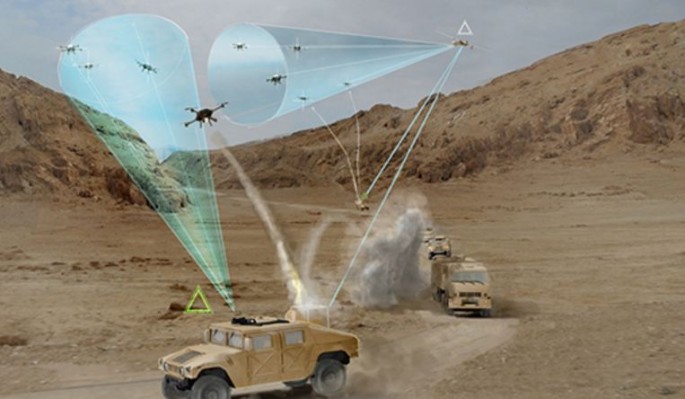The U.S. Defense Advanced Research Projects Agency (DARPA) is soliciting the assistance of private firms and the academe to help it push forward with the tougher than expected challenged facing its Mobile Force Protection (MFP) program.
The anti- drone program plans to first build an agile and mobile aerial drone-defense system that can defeat attacks by self-guided, small unmanned aerial vehicles(UAVs) against important targets such as troop and supply convoys.
Up for grabs is a $63 million project that must defend against today's radio-controlled and GPS-guided weaponized UAVs, and also against future UAVs that navigate by visual means in large groups.
These future drone swarms can either be used to gather intelligence or to simultaneously attack priority targets. Some of these drones will carry weapons such as air-to-ground missiles while others will be "kamikaze" drones that explode on hitting their targets.
Of particular interest to DARPA is a system ability to counter relatively small fixed-wing or helicopter UAVs weighing less than 200 pounds. An MFP system must be able to integrate new approaches and technologies quickly, and work on ground vehicles, surface vessels and aircraft.
The MFP program will consist of three phases, each culminating in an open-air demonstration against continuously more sophisticated threats and challenging scenarios.
An MFP system might include distributed and elevated sensors and effectors networked to form a fused air surveillance picture; be controlled for fast decisive action and provide several low-risk UAV-neutralization options.
A top-level system MFP architecture should boil down to three steps: sense, decide, and act using a neutralization web that integrates existing and emerging sensors through a fusion engine.
DARPA last week released an industry solicitation last week (DARPA-PS-17-01) for the Mobile Force Protection (MFP) program.
"DARPA is interested in identifying novel, flexible, and mobile layered defense systems and component technologies to address this increasingly important issue as well as conventional threats," said Jean-Charles Ledé, DARPA program manager.
"We're looking for scalable, modular, and affordable approaches that could be fielded within the next three to four years and could rapidly evolve with threat and tactical advancements."



























